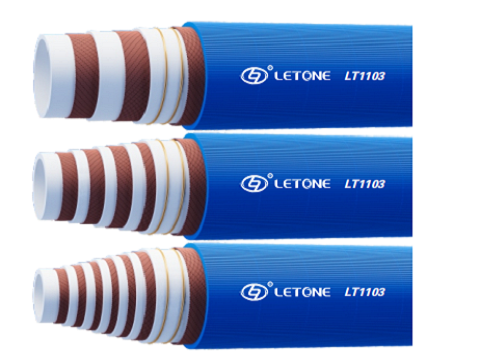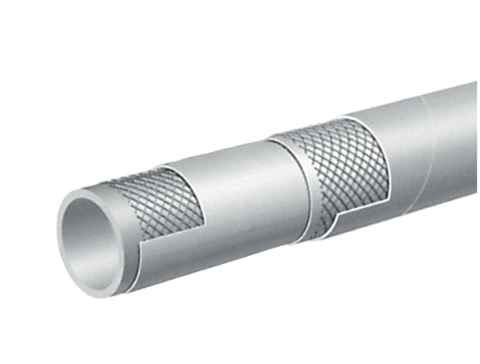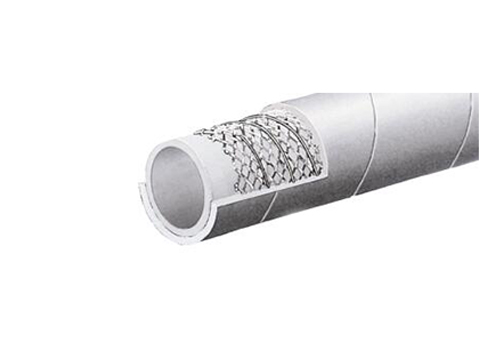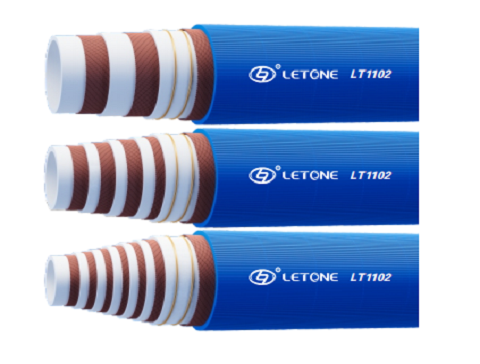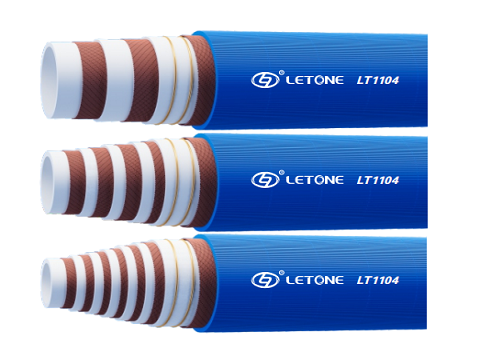A rotary hose in a drilling rig is a high pressure flexible rubber and steel reinforced hose used to connect the standpipe to the swivel or top drive on a derrick. This flexible piping system allows the Kelly, drill string and drill stem to be raised and lowered while drilling with the drilling fluid. It is critical to the drilling process that this hose is strong enough to handle the high amounts of pressure it is under.
These hoses are usually made from a strong rubberized polymer that is resilient and can hold the pressure of the pumped drilling fluid at high rates. This material must also be flexible so that the swivel on the derrick can move freely while still connecting to the rotary hose at one end. The other end of the hose must stay connected to the standpipe so that the drilling fluid can circulate properly on the rig.
The rotary hoses on a drilling rig are usually designed to have a working pressure of 1500 to 5000 psi, depending on the size. They are also able to operate at temperatures from -40°F to +180°F, making them suitable for a variety of conditions. They are available in various lengths, starting at 4ft vibrator hoses and going all the way up to 91ft choke and kill hoses.
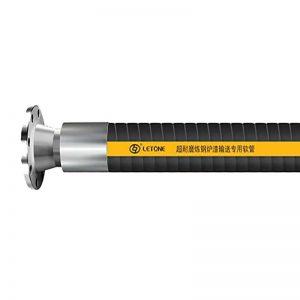 Among the most common hazards on a drilling rig is a potential leak in a rotary hose. This is a serious concern because a small leak in a high pressure hose can cause injuries or even death. A leaking hose should be repaired as soon as possible. A good way to check for a leak is by using a piece of cardboard or wood, which will absorb the drilling fluid and reveal its location.
Another important safety consideration on a drilling rig is proper emergency preparedness. OSHA requires that every drilling site have an emergency response plan in place, which must include a list of emergency equipment that is readily available on the rig and training for supervisors and workers on emergency escape and rescue procedures. The plan should also provide for a means of communicating with crew members on the ground, in case of an emergency.
Other important aspects of a good oil field safety program are the use of personal protective equipment, such as hard hats and gloves, and a thorough job description for all positions on the rig. It is also important to have a good attitude toward work and safety, which will help reduce the number of accidents on the rig. A good motto to remember is that no job on an oilfield is so important or urgent that it cannot be done with a "safety first" mindset. It is the only way to ensure the safety of all those who work on a drilling rig.
Among the most common hazards on a drilling rig is a potential leak in a rotary hose. This is a serious concern because a small leak in a high pressure hose can cause injuries or even death. A leaking hose should be repaired as soon as possible. A good way to check for a leak is by using a piece of cardboard or wood, which will absorb the drilling fluid and reveal its location.
Another important safety consideration on a drilling rig is proper emergency preparedness. OSHA requires that every drilling site have an emergency response plan in place, which must include a list of emergency equipment that is readily available on the rig and training for supervisors and workers on emergency escape and rescue procedures. The plan should also provide for a means of communicating with crew members on the ground, in case of an emergency.
Other important aspects of a good oil field safety program are the use of personal protective equipment, such as hard hats and gloves, and a thorough job description for all positions on the rig. It is also important to have a good attitude toward work and safety, which will help reduce the number of accidents on the rig. A good motto to remember is that no job on an oilfield is so important or urgent that it cannot be done with a "safety first" mindset. It is the only way to ensure the safety of all those who work on a drilling rig.

